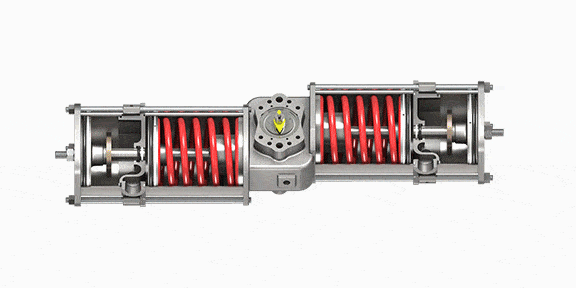ESD Valve
Good Supplier introduces the Emergency shutdown valve, also known as ESDV. What is an ESDV?
ESD valves are used to isolate the facilities in emergencies.
An emergency shutdown valve is a valve fitted with a spring return actuator, allowing the valve to be closed by the actuator spring when the actuator pressure signal is released.
Shutdown valves are widely used to reduce dangerous escalation from one system to another in the oil and gas production process for safe and proper isolation purposes.
A high integrity Emergency Shutdown System controls the general shut down valve.
ESD valves are usually quarter-turned ball valves, but they can also be sliding stem gate valves or other types, although less common.
They are used to isolate pressure and flow from a particular source during an overpressure situation or detection of a dangerous event.
ESD valves are integrated into the design of the plant system equipment and can be installed in line with any location upstream, midstream, or downstream.
Emergency shutdown valve is a new high-tech product with advantages of energy conservation, environmental protection, and convenient and fast operation.
Product Description
What is the working principle of an emergency shutdown valve?
Emergency shutdown valve is one of the hydraulic control valves, consisting of the main valve, throttle valve, pilot valve, pressure gauge, joint, and other pipe fittings. When the primary valve inlet pressure is lower than the pilot valve set pressure, the pilot valve is open.
When the central valve cavity pressure on the cover is equal to its outlet pressure, there is a pressure gap between the inlet and outlet.
The water flows through the valve mouth to the outlet. When the fire pump starts up, or variable frequency pump pressure increases more than the set pressure of the pilot valve, the control valve pressure from the main valve inlet to the pilot valve will increase.
Then, the tension on the spring will increase; pushing down and compressing will drive the valve core to move down, making the pilot valve closed.
At this time, the central valve inlet pressure through the throttle valve is added to the valve cover cavity, for the downward force of the disc is greater than the thrust upward, leading to the main valve closed.
The relief valve is most often installed directly downstream of the pump to control system pressure but can be used in other parts of the circuit to protect isolated components.

Product Feature
What are some features and benefits of these emergency shutdown valves?
⦿ Fast action: A shutdown valve should act quickly to reduce risk escalation. As a rule of thumb, the shutdown valve should start the shut down within 10 seconds of activation and the time taken from Full Open to Full Close is within 1-2 seconds per inch of the shutdown valve size.
⦿ The valve assembly has a regular process operating function until Fire-Chek is triggered;
⦿ Local thermal shutdown for automatic shutdown in the event of a fire;
⦿ Fire-Chek stops supply air to prevent feeding oxygen to the fire;
⦿ Remote shutdown to isolate subsystems.

Emergency Shutdown Valves are a fundamental part of the safety systems associated with oil and gas, utility, and other hazardous processes. As the name suggests, these valves are not intended for controlling the process itself but rather for protection. The valves are of fail to closed nature to contain the liquid inventory.
Get in contact with us NOW to have the best quality of good and reliable parts for the choke and industrial valves in the industry! The only place where HIGH QUALITY and SPEED OF DELIVERY meets LOWER PRICES!